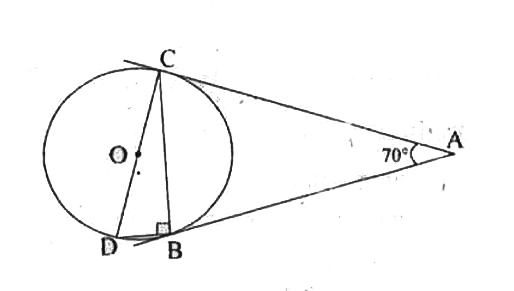साम्यावस्था पर 500 mL पात्र में A, B, C, D प्रत्येक के 1.5 M है C तथा D के 0.5 M बाहर निकाल दिए जाये तो KC होगा A+B→C+D
1
19
49
59
The correct Answer is:A
Step by step video, text & image solution for साम्यावस्था पर 500 mL पात्र में A, B, C, D प्रत्येक के 1.5 M है C तथा D के 0.5 M बाहर निकाल दिए जाये तो K_(C) होगा A + B -> C + D by Chemistry experts to help you in doubts & scoring excellent marks in Class 12 exams.
Updated on:21/07/2023Topper's Solved these Questions
- रासायनिक साम्य BOOK - ALLEN HINDICHAPTER - रासायनिक साम्य EXERCISE - EXERCISE-IV (Assertion & Reason)
12 Videos
- रासायनिक साम्य BOOK - ALLEN HINDICHAPTER - रासायनिक साम्य EXERCISE - EXERCISE-II (Previous Year Questions)
30 Videos
- रासायनिक बलगतिकीBOOK - ALLEN HINDICHAPTER - रासायनिक बलगतिकीEXERCISE - Exercise-IV Assertion & Reason
16 Videos
- वर्गीकरण व नामकरण BOOK - ALLEN HINDICHAPTER - वर्गीकरण व नामकरण EXERCISE - Exercise-IV (Assertion & Reason)
8 Videos
Similar Questions
कथन :- A(g)+B(g)↔C(g) इस अभिक्रिया में यदि अक्रिय गैस मिला दे तो साम्य नियतांक अप्रभावित रहता है |
कारण :- साम्य नियतांक केवल ताप पर निर्भर करता है |
View Solutionअभिक्रिया : CH4(g)+2O2(g)↔CO2(g)+2H2O(l)ΔrH=−170.8kJmol−1 के लिए निम्न कथनो में से कौन सा सत्य नहीं है :-
View Solutionकथन: अभिक्रिया की दर क्रियाकारक या उत्पाद की सान्द्रता में परिवर्तन की दर होती है।
कारण: अभिक्रिया की दर सम्पूर्ण अभिक्रिया के दौरान नियत रहती है।
View Solutionकथन :-
 साइक्लो हेक्सेन नाइट्राइल कहलाता है
साइक्लो हेक्सेन नाइट्राइल कहलाता है
कारण :- इसमें वलय में छ: कार्बन परमाणु है और प्रतिस्थापी समूह के रूप में है।
View SolutionIn a ABC , AD is the bisector of ∠A , meeting side BC at D . If BD=2.5cm, AB=5cm and AC=4.2cm , find DC . (ii) If BD=2cm, AB=5cm and DC=3cm, find AC . (iii) If AB=3.5cm , AC=4.2cm and DC=2.8cm , find BD .
View SolutionIn a ABC , AD is the bisector of ∠A , meeting side BC at D . If AB=10cm , AC=14cm and BC=6cm , find BD and DC (ii) If AC=4.2cm , DC=6cm and BC=10cm , find AB . (iii) If AB=5.6cm , AC=6cm and DC=3cm , find BC .
View SolutionIn a ABC , perpendicular AD from A on BC meets BC at D . If BD=8cm , DC=2cm and AD=4cm , then ABC is isosceles (b) ABC is equilateral (c) AC=2 AB (d) ABC is right-angled at A .
View SolutionIf (a−b) is 6 more than (c+d) and (a+b) is 3 less than (c−d) , then (a−c) is (a) 0.5 (b) 1 (c) 1.5 (d) None of these
View Solution500 ml vessel contains 1.5 M each of A, B, C and D at equlibrium. If 0.5 M each of C and D are taken out, the value of K_(c) for A+BhArrC+D will be
View Solution500 ml vessel contaions 1.5 M each of A,B,C and D at equilibrium . If 0.5 M each of C and D are taken out, the value of K_(c) "for" A + B hArr C+D will be
View Solutionदी गई आकृति में बिंदु B ,C तथा D से गुजरने वाले वृत्त के बिंदु B तथा C पर AB तथा AC स्पर्श रेखाएं है। यदि ∠BAC=70∘ और ∠CBD=90∘ तो ∠BCD का मान है -

View Solutionयदि a,b,c,d गुणोत्तर श्रेढी में हों, तो सिद्ध कीजिए कि :
(b+c)(b+d)=(c+a)(c+d)
View Solution500 ml of vessel contains 1.5 M each of A, B, C and D at equilibrium. If 0.5 M each of C and D are taken out, value of Kc for
A+B⇔C+D
will be :
View SolutionIn a ABC , D and E are points on the sides AB and AC respectively such that DE∣∣BC If AD=6 cm , DB=9 cm and AE=8 cm , find AC .
View SolutionIn a △ABC , AD is the bisector of ∠A , meeting side BC at D . (i)IfBD=2.5cm, AB=5cm and AC=4.2cm , find DC . (ii)IfBD=2cm, AB=5cm and DC=3cm, find AC . (iii)IfAB=3.5cm , AC=4.2cm and DC=2.8cm , find BD .
View Solution
